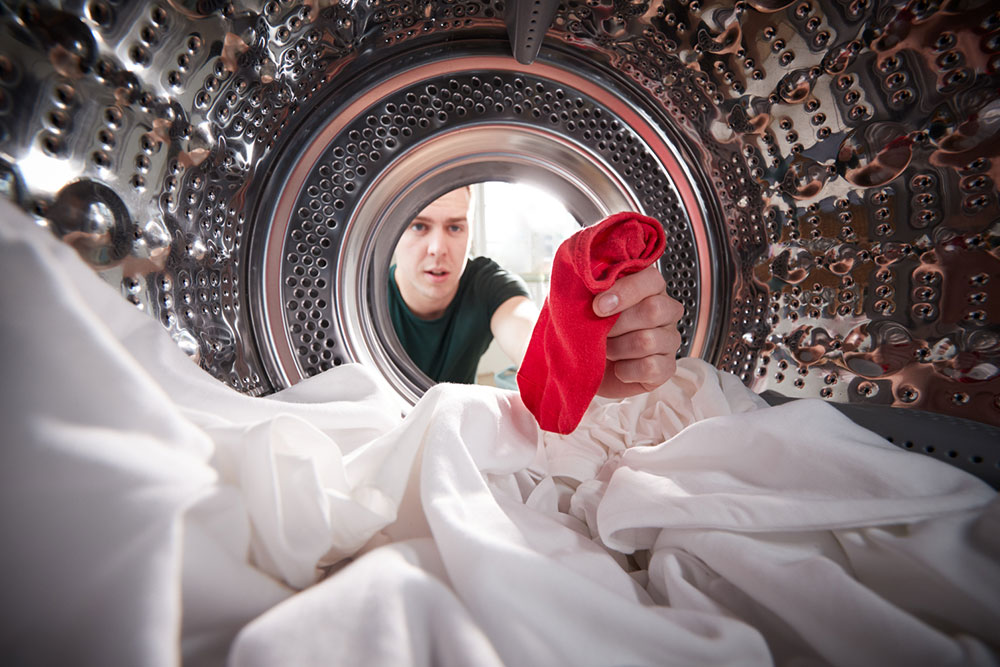11 common laundry mistakes to avoid

Doing one’s laundry is a necessary – albeit mundane – daily chore householders must engage in for clean and tidy clothes. It enhances clothes’ freshness and increases their durability. Modern laundry appliances and products ensure that the laundry process is hassle-free and requires minimal manual effort. Although it appears straightforward, numerous common laundry mistakes can compromise the cleanliness and longevity of clothing. So, there are some mistakes one should avoid to achieve impeccable laundry results.
1. Not sorting clothes
Sorting is one of the fundamental steps in the laundry process that is often overlooked. Neglecting proper sorting can lead to various issues, including color bleeding, fabric damage, and lint transfer. To avoid these problems, one should always sort laundry into distinct categories.
- Sorting by color
Separate laundry into dark, light, and white to prevent color bleeding. Washing dark-colored items with whites can result in unsightly stains while washing lights with darks can make clothing appear dingy over time. - Sorting by fabric type
Different fabrics necessitate different care. Sorting by fabric type helps prevent damage and extends the life of garments. Delicate items like silk and lace should be washed separately from sturdier materials like denim or towels.
2. Not checking for stains
Before placing clothing in the washer, inspect for any stains. Treating stains promptly before laundering can significantly improve the chances of successful removal.
3. Overloading the machine
Stuffing the washing machine to the brim might seem efficient, but it is a common mistake that can lead to subpar results. Overloading the machine can cause several problems:
- Cramming clothes
When clothes are crammed together, water and detergent cannot circulate properly, resulting in ineffective cleaning. This can leave dirt, grime, and detergent residue on clothing. - Ignoring washing machine guidelines
Overloading can put excessive strain on the washing machine’s motor and drum, potentially leading to premature wear and costly repairs.
To avoid these issues, one should adhere to the washing machine’s capacity guidelines and provide clothing with enough room to move freely during the wash cycle.
4. Not using detergent properly
Selecting the right detergent is crucial for achieving clean and fresh-smelling laundry. Using the wrong detergent can lead to issues such as fabric damage, skin irritations, and poor cleaning performance.
- Using the wrong detergent type
Different fabrics and laundry needs call for different types of detergent. Choose the right detergent for the job, whether it’s for regular laundry, high-efficiency machines, or special fabrics like wool or silk. - Using excess detergent
More detergent does not equate to cleaner clothes. Using excessive detergent can lead to soap buildup, which can attract dirt and bacteria, leaving clothing less clean and prone to odor.
5. Ignoring labels
Many overlook the importance of reading clothing labels when selecting detergent. Always check for specific care instructions and choose a detergent that aligns with those recommendations.
6. Not using fabric softeners properly
Fabric softeners are commonly used to add a pleasant scent and soften clothes. However, using them incorrectly can lead to a few laundry mishaps.
- Overusing fabric softener
Pouring too much fabric softener into the load can lead to a slimy residue on clothes, which can be challenging to remove. Follow the recommended dosage on the product label. - Using fabric softener on the wrong fabrics
One should avoid using fabric softener on towels, as it can reduce their absorbency. Instead, opt for a vinegar rinse to keep towels soft and absorbent. - Adding fabric softener too early
It is important to wait until the rinse cycle to add fabric softener. Adding it too soon can interfere with the cleaning process, reducing the effectiveness of detergent.
7. Ignoring dryer guidelines
The laundry process does not end with washing; proper drying is just as crucial. Ignoring dryer guidelines can lead to shrinkage, wrinkles, and damaged clothing.
- Overdrying clothes
Overdrying clothes can cause them to shrink and lose their shape. To avoid this, remove clothes when slightly damp from the dryer and allow them to air dry to the desired level of dryness. - Mixing fabric types in the dryer
Just as with washing, it’s important to sort clothing before drying. Heavier fabrics can take longer to dry, while delicate items may need a lower heat setting or air drying to avoid damage.
8. Neglecting dryer sheets or Balls
Dryer sheets or wool dryer balls can help reduce static and wrinkles in clothing. Neglecting these can result in static cling and a need for excessive ironing.
9. Neglecting to clean the washing machine
Failure to clean one’s washing machine periodically can lead to unpleasant odors and the buildup of mildew and bacteria. Over time, detergent residue and fabric fibers can accumulate in the machine, creating an environment that is less than ideal for clean clothes. Thus, one should regularly clean the washing machine’s drum, detergent dispenser, and filters to prevent these issues.
10. Using hot water for all loads
While hot water can be effective for heavily soiled items and certain fabrics, it is not always necessary. Using hot water for all of one’s laundry loads can increase energy consumption and cause colors to fade and fabrics to deteriorate faster. Hence, it is important to consult clothing labels and use the appropriate water temperature: cold for delicate items and colors, warm for most everyday laundry, and hot for whites and heavily soiled items.
11. Neglecting to empty pockets
Overlooking the contents of pockets before throwing clothes in the washer can result in unwanted surprises. Items like tissues, pens, or loose change can cause damage to both your clothing and the washing machine. Make it a habit to check and empty pockets before starting the laundry to prevent these mishaps.
Laundry may appear routine, but mastering it involves avoiding common mistakes that can impact the quality and longevity of clothing. So, one should remember these tips to maintain a wardrobe in pristine condition. Garments washed carefully have longer lifespans and a fresher appearance.